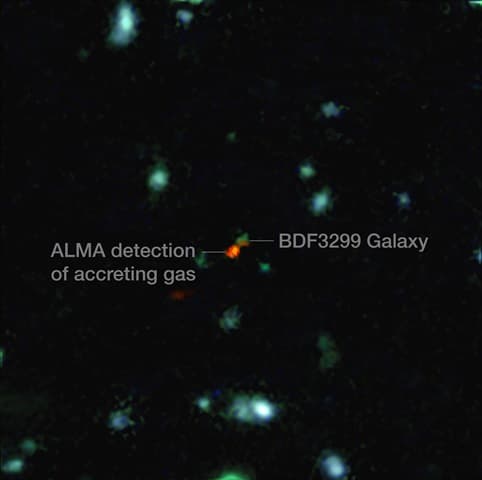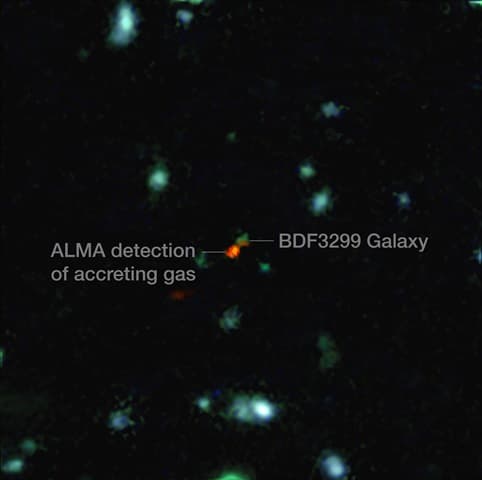A new paper accepted for publication this month has highlighted how spiral galaxies came to form in the early Universe. By using the power of the Atacama Large Millimeter/submillimeter Array (ALMA), a team lead by Roberto Maiolino has individuated the mechanism through which galaxies gather stellar mass.
For a star to form a certain amount of gas needs to condense within a specific volume; these values are defined by the Jeans instability which occurs when the internal pressure of the gas cannot balance its gravity anymore. Anyone familiar with thermodynamics will know that the pressure is proportional to the temperature, so seemingly counterintuitively for a star to form you need to have a cool gas.
In the early Universe the temperature of the gas was affected by:
the gas itself; Hydrogen is bad at emitting heat so you need the presence of other elements for a more effective cooling
the feedback of supermassive blackholes and supernovae that heat up and disrupt the gas clouds.
This research looks at galaxies after the first billion years of the Universe’s life. Protogalaxies were thriving already with the seed of the SMBHs, and the first population of stars had already evolved. When these went supernova they generated an intense feedback on the main stellar body, and the source of new gas (and thus stars) is a substantial accretion from gas clumps and satellites outside the galaxies. What the team has found is evidence of this accretion, which is how these protogalaxies turned into spirals. By following a spectral line for the Carbon ([CII] to be precise), they traced gas accretion on the main stellar body from a gas reservoir outside the main galaxy.

ALMA witnesses assembly of a galaxy in early Universe. CREDIT: ESO/R. Maiolino
If you want to know more, the full study is here
**REFERENCE

